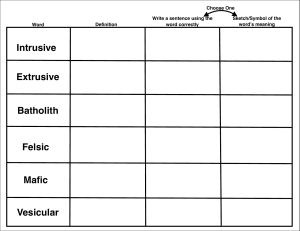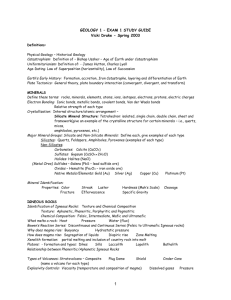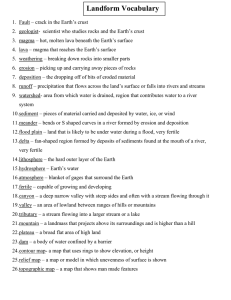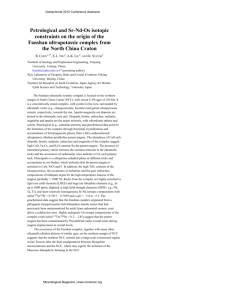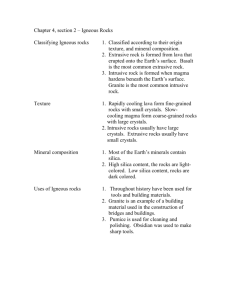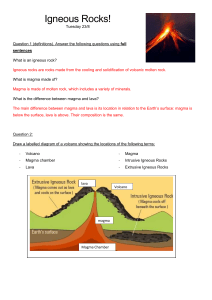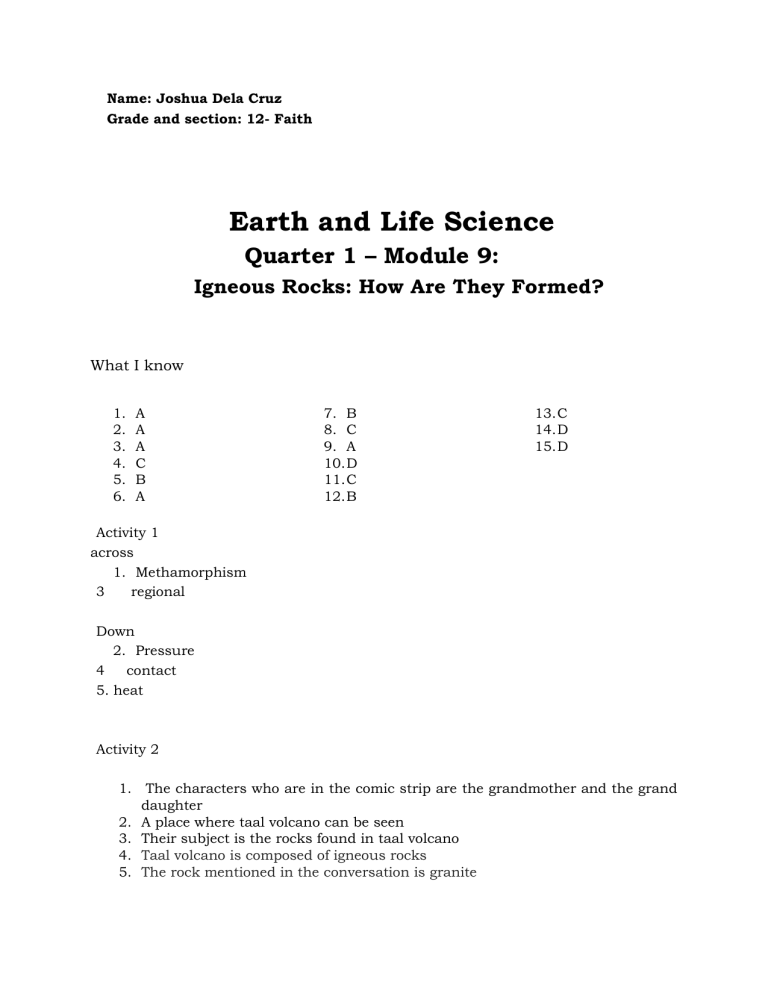
Name: Joshua Dela Cruz Grade and section: 12- Faith Earth and Life Science Quarter 1 – Module 9: Igneous Rocks: How Are They Formed? What I know 1. 2. 3. 4. 5. 6. A A A C B A 7. B 8. C 9. A 10. D 11. C 12. B 13. C 14. D 15. D Activity 1 across 1. Methamorphism 3 regional Down 2. Pressure 4 contact 5. heat Activity 2 1. 2. 3. 4. 5. The characters who are in the comic strip are the grandmother and the grand daughter A place where taal volcano can be seen Their subject is the rocks found in taal volcano Taal volcano is composed of igneous rocks The rock mentioned in the conversation is granite Activity 3 Type of Igneous Rock Rock (intrusive or extrusive) Formed from (magma or lava) Cooling Crystal size rate (small, (fast or slow) large or no crystal) Rhyolite extrusive 1. magma 2. fast small Gabbro 3. intrusive 4. magma slow large Granite intrusive 5. magma slow 6. small Scoria 7. extrusive lava 8. fast No crystals Obsidian 9. extrusive lava fast 10. No crystals Activity 4 Igneous Rock 1. form from cooling and solidification of lava and 1. magma 2. intrusive 2. 3.large crystals 3.formed 4.composed of 4. magnesium and iron 5. magma cools 5. slowly 6. extrusive 6. 7. composed of 7. aluminum 8. small or no 8. form 9. Lava cools 9. quickly Activity 5 Ultramafic rocks are very dark to dark greenish in color, and they are composed of olivine, pyroxene, and calcium-bearing plagioclase feldspars (anorthite). They melt in higher temperatures (around 1200 C) and have the lowest silica content (around 40%). Mafic rocks are dark in color, and they are composed mostly of pyroxene and plagioclase feldspars (leaning on the calcium-rich plagioclase like bytownite and labradorite), but there are also traces of olivine and amphiboles. Basaltic magmas are usually less viscous and fluid. Felsic rocks are lightly colored (usually pinkish or light orange), and they are composed mostly of pot-assium feldspar, mica, and quartz, with traces of amphiboles, biotites, and plagioclase feldspars. They melt in lower temperatures (usually around 750 C) and are usually viscous because of its high silica content (around 70%). Intermediate rocks are grayish in color, and they are composed mostly of amphiboles, biotites, and traces of pyroxenes. Sodium-bearing plagioclase feldspars, like andesine, oligoclase, and albite are also common. Activity 6 Across 1. Porphyritic 2. Aphanitic 3. Vesicular Down 1. Phaneritic 4. Glassy Activity 7 1.fire 11.silica 2.surface,beneath 12.oversaturation 3.solidification, crystallization 13.undersaturation 4.temperature, pressure, cool, solidify, 14.ultramafic,mafic, intermediate, felsic crystallized 15.felsic,ultramafic 5.intrusive, extrusive 16.felsic,ultramafic 6.magma,lava 17.ultramafic , felsic 7.slowly, quickly 18 . ultramafic , felsic 8.large,small 19. ultrafamic, felsic 9.gabbro,diorite, granite 20.lighter,lower 10.basalt, obsidian, rhyolite, scoria Assessment 1. 2. 3. 4. 5. 6. 7. 8. A A A C B B C B 9. D 10. A 11. B 12. C 13. D 14. D 15. C
